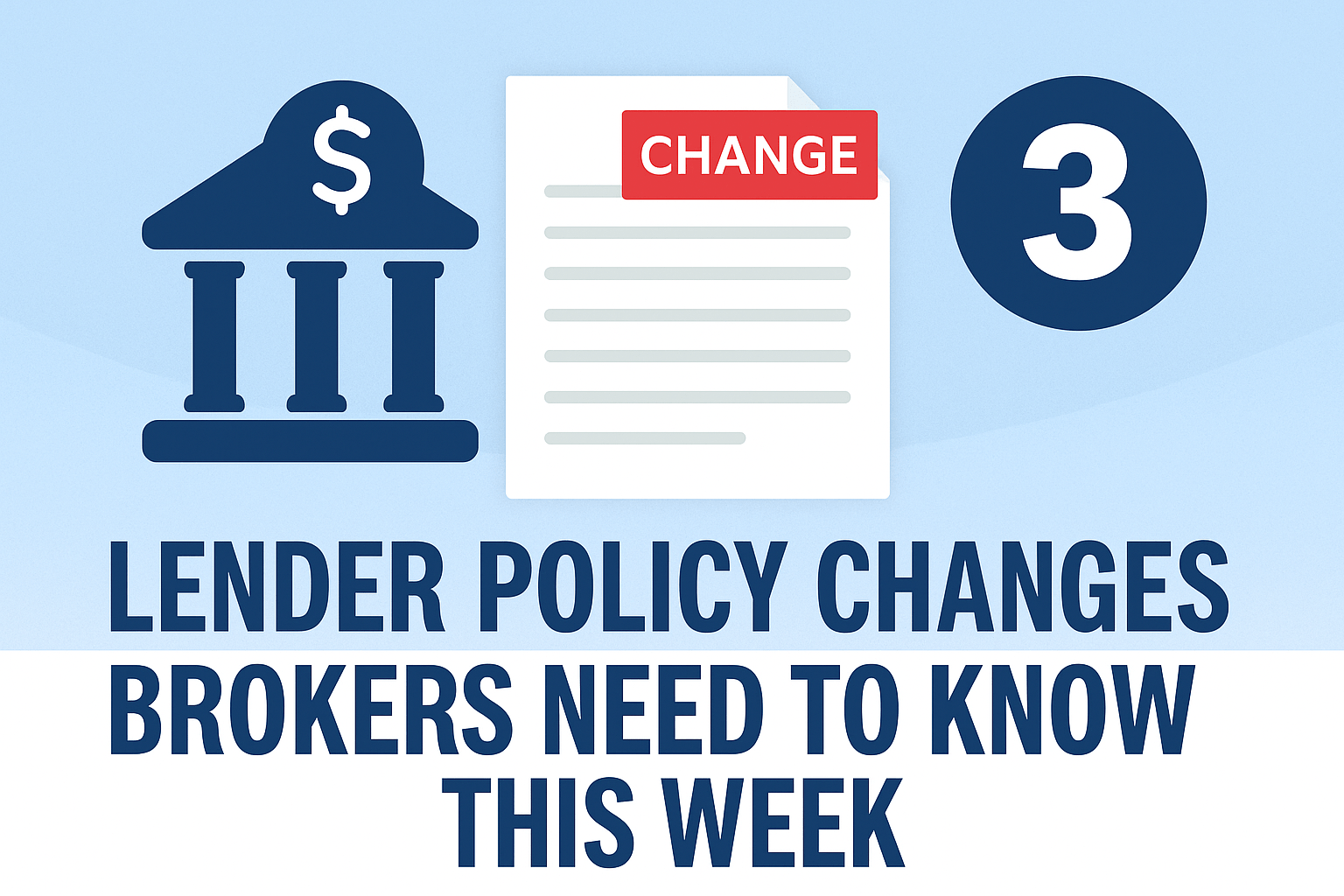In recent years, non-bank lending has emerged as a transformative force for Australian small and medium enterprises (SMEs), providing alternatives that traditional banking institutions frequently overlook.
As small businesses encounter an increasing demand for prompt and adaptable funding solutions, non-bank lenders have responded with technology-driven processes and less stringent requirements.
This article examines the factors contributing to the rising popularity of non-bank lending, the associated benefits and risks, and its substantial impact on the Australian SME landscape.
It will also explore how this evolving financial sector has the potential to reshape the future for small businesses throughout the nation.
Key Takeaways:
What is Non-Bank Lending?

Non-bank lending encompasses the provision of financial services and funding to businesses and individuals outside the conventional banking system. In this context, alternative lenders, including peer lenders and non-bank lenders, offer flexible financing options.
This form of lending holds particular significance for small and medium-sized enterprises (SMEs) in Australia, especially as they confront cash flow constraints and seek expedited, more accessible capital to facilitate their business growth during a period characterized by rising interest rates and economic challenges.
Why is Non-Bank Lending Gaining Popularity for Australian SMEs?
Non-bank lending is increasingly gaining traction among Australian small and medium-sized enterprises (SMEs) due to a distinct set of factors. These include the demand for expedited funding processes, more flexible repayment terms, and a rising array of lending solutions tailored to the specific requirements of small businesses.
As traditional banks implement stricter lending criteria, alternative lenders are emerging to fill the financing gap, thereby facilitating businesses in overcoming cash flow constraints and addressing the financing challenges that have arisen in recent years.
Faster Funding Process with Investment Funding
One of the primary reasons small businesses are increasingly turning to non-bank lenders is the expedited funding process, which enables Australian SMEs to access capital more quickly than they would through traditional banks.
Swift access to financing not only enhances cash flow but also facilitates timely business decisions, such as capitalizing on growth opportunities or managing unforeseen expenses. Non-bank lenders achieve this efficiency through streamlined application and approval processes that are often less complex than those employed by conventional banks.
For instance, data indicates that non-bank lenders can reduce the lending timeline from weeks to as little as 24 hours, providing significant advantages for those seeking to optimize their cash flow.
- According to a 2022 study, over 70% of SMEs reported enhanced operational flexibility as a result of faster funding.
- Case studies demonstrate that businesses utilizing alternative finance sources experienced an average cash flow improvement of 30%.
By providing these enterprises with timely access to capital, non-bank lenders play a pivotal role in fostering resilience and growth within the SME sector.
More Flexible Repayment Terms During Economic Challenges
Flexible repayment terms provided by non-bank lenders present a significant advantage for Australian SMEs, allowing these businesses to customize their financial obligations in accordance with their distinct cash flow circumstances.
This adaptability can be especially beneficial during various growth stages, including initial startup phases, expansion efforts, or unforeseen downturns. For example, when a business undergoes rapid growth, the ability to modify repayment schedules to correspond with increased revenue can alleviate financial pressure and facilitate reinvestment into critical areas such as marketing or inventory management.
In contrast, traditional banking institutions often impose rigid terms that may not meet the specific requirements of SMEs. Companies like Canva and Afterpay have experienced substantial success, in part, due to the availability of flexible financing solutions that enabled them to scale sustainably.
By selecting lenders that emphasize flexibility, businesses are more likely to secure funding that adapts to their growth trajectory, thereby fostering long-term success.
Tech-Driven Approvals
The emergence of technology-driven approvals in non-bank lending is significantly transforming how Australian small and medium enterprises (SMEs) access financing. Innovative technology platforms are streamlining the assessment process, resulting in a much quicker and more efficient method compared to traditional banking institutions.
These advancements are particularly vital in an environment where SMEs frequently encounter prolonged delays when seeking funding through conventional channels. By integrating automated assessments and utilizing comprehensive datasets, lending platforms can now evaluate applications in real time. This evolution allows entrepreneurs to receive insights and funding options almost instantaneously, contrasting sharply with the weeks or even months typically associated with traditional banking processes.
- Automated credit scoring models facilitate a broader understanding of borrower potential.
- Data-driven decision-making reduces human error and enhances reliability.
- Integrated technology supports compliance management, reducing compliance time effort and thereby diminishing administrative burdens.
Consequently, SMEs can concentrate more on growth opportunities rather than becoming mired in bureaucratic challenges.
Fewer Restrictions and Enhanced Financing Solutions

Non-bank lenders generally implement fewer restrictions compared to traditional banks, facilitating greater access to capital for Australian small and medium-sized enterprises (SMEs), particularly during periods of cash flow constraints, financing challenges, or external administration.
This flexibility is essential, as it give the power tos SMEs to make informed decisions without being hindered by stringent requirements. Non-bank lending institutions have emerged as a viable alternative, offering quicker turnaround times and more personalized service. As noted by experts such as Jon Sutton, this approach can significantly alleviate pressures associated with tax debts and encumbrances on family homes, which often obstruct business growth.
This enhanced access to capital not only enables SMEs to address their immediate financial difficulties but also contributes to broader economic recovery by allowing them to invest in growth initiatives.
Key advantages include:
- Access to immediate cash flow.
- Flexibility in repayment terms.
- The ability to leverage collateral without limitations.
What are the Benefits of Non-Bank Lending for Australian SMEs, including Business Investment?
The advantages of non-bank lending for Australian small and medium-sized enterprises (SMEs) are extensive and multifaceted. These benefits include:
- Enhanced access to capital
- Increased competition within the lending market
- A broader array of financing options tailored to meet the specific needs of small businesses
As SMEs increasingly encounter cash flow limitations and financing difficulties, comprehending these advantages becomes essential for making informed financial decisions.
Access to Funds for Small Businesses
Non-bank lending significantly enhances access to funds for small businesses in Australia, enabling them to secure the necessary capital to navigate growth phases or address temporary challenges.
In an environment where traditional financial institutions often impose stringent requirements that may hinder the potential of emerging enterprises, non-bank lenders provide a vital alternative. These lenders offer flexible financing options tailored to the unique challenges faced by many small and medium-sized enterprises (SMEs).
For example, a recent study showcased how a local café successfully expanded its operations by obtaining a swift loan from a non-bank institution, which offered a more adaptable loan structure in comparison to conventional banks. Furthermore, alternative funding solutions give the power to small businesses to leverage their assets or cash flow without the protracted approval processes typically associated with traditional lending.
- In another instance, a tech startup utilized non-bank financing to invest in new equipment, resulting in enhanced efficiency and increased market competitiveness.
- This approach has enabled numerous businesses to effectively address cash flow challenges, ensuring they remain responsive to evolving market dynamics.
Increased Competition in the Lending Market Amid Economic Growth
The emergence of non-bank lenders has resulted in increased competition within the lending market, which is advantageous for Australian small and medium enterprises (SMEs), a focus area for the Reserve Bank of Australia seeking favorable rates and terms for their financing requirements.
As these alternative financial providers establish their presence, they effectively disrupt the traditional banking landscape, compelling established institutions like National Australia Bank to refine their offerings. This shift not only improves the pricing strategies available to businesses but also significantly enhances the customer service experience.
For many SMEs, navigating the intricacies of funding has become more straightforward and transparent, fostering a more accessible lending environment. Key benefits include:
- Lower interest rates
- Faster approval processes
- Increased flexibility in repayment options
Many of these new lenders utilize advanced technology to deliver efficient services, ensuring that SMEs receive timely support tailored to their specific needs.
More Options for Borrowers
The emergence of non-bank lenders has expanded the borrowing options available to Australian SMEs, enabling them to select financing solutions that are tailored to their specific business requirements, thereby impacting the SME Growth Index.
This transformation in lending dynamics permits entrepreneurs to investigate alternatives beyond traditional bank offerings. Among these options are peer-to-peer lending platforms, which facilitate direct connections between borrowers and investors, thereby providing competitive interest rates and expedited processing times.
Furthermore, cash flow loans offer immediate capital to address day-to-day expenses, while lines of credit ensure ongoing access to funds, granting businesses greater control over cash management. These diverse financial solutions not only improve liquidity but also give the power to businesses to swiftly adapt to evolving market conditions, thereby promoting growth and stability, particularly during the business growth phase.
Common lending solutions include:
- Peer-to-Peer Lending
- Cash Flow Loans
- Lines of Credit
By leveraging these contemporary financial tools, SMEs are more effectively positioned to navigate their unique challenges and realize their long-term objectives, especially as they explore alternative financing options.
What are the Risks of Non-Bank Lending for Australian SMEs?

While non-bank lending provides several advantages for Australian SMEs, it is crucial to evaluate the accompanying risks. These include elevated interest rates, the possibility of predatory lending practices, and insufficient government regulation, which may leave borrowers exposed to potential vulnerabilities.
Higher Interest Rates
One of the significant risks associated with non-bank lending for Australian SMEs is the potential for higher interest rates compared to traditional bank loans. This situation can exacerbate financing challenges for businesses already operating on thin profit margins. The disparity in rates can be attributed to various factors, including the absence of regulatory oversight and the increased operational costs often faced by non-bank lenders. As SMEs navigate this complex financial landscape, it is imperative for them to carefully assess their options and understand the implications of these elevated rates on their overall financial health.
To effectively manage these costs, businesses can employ several strategies, including consulting with brokers and managing their capital mix:
- Cost Management: Regularly review and streamline operational expenses to enhance cash flow.
- Diverse Financing Options: Consider a combination of financing sources, including traditional loans, equity financing, or crowdfunding, to mitigate reliance on any single lender.
- Negotiation: Engage in discussions with lenders to seek improved terms or interest rates based on loyalty and repayment history.
- Financial Planning: Develop a comprehensive financial plan that outlines potential future expenses and revenue, thereby maintaining a healthy budget.
By implementing these strategies, SMEs can not only navigate the challenges presented by non-bank lending but also better position themselves for sustained success in the marketplace.
Potential for Predatory Lending
The risk of predatory lending presents a significant concern for Australian small and medium-sized enterprises (SMEs) when engaging with non-bank lenders. The absence of stringent regulations in this sector can result in exploitative practices, making it essential for business owners to remain vigilant regarding the potential pitfalls associated with such financial agreements.
Understanding predatory lending practices is crucial for safeguarding the financial health of SMEs, as emphasized by ScotPac CEO Jon Sutton.
These practices may include:
- High-interest rates that considerably exceed market rates, thereby placing undue strain on cash flow.
- Hidden fees that are not transparently disclosed, leading to unexpected costs.
- Unfair loan terms that can entrap borrowers in a cycle of debt.
To effectively identify these warning signs, SMEs should conduct a thorough review of the terms and conditions of any non-bank lending agreement. It is advisable to compare offers from various lenders and seek professional guidance when necessary.
This diligence not only aids in recognizing predatory lending practices but also facilitates knowledge-based decision making that promotes financial stability.
Lack of Government Regulation and its Impact on Economic and Financial Statistics
The absence of government regulation in the non-bank lending sector presents significant risks for Australian small and medium enterprises (SMEs), leaving them with limited recourse in the event of issues with their lenders.
This situation is concerning, particularly given that small and medium enterprises frequently depend on these alternative financing sources to support growth, manage cash flow, and address unforeseen challenges. In the absence of stringent oversight, non-bank lenders may engage in practices that jeopardize the financial stability of these businesses. The lack of clarity regarding compliance can result in misunderstandings and disputes, placing SMEs at a disadvantage against lenders that may not adhere to fair lending practices.
- Support Services: Various organizations provide support services specifically designed for SMEs, including financial advice and insights from ScotPac, legal assistance, and dispute resolution services, with the help of brokers.
- Protective Measures: Many SMEs can benefit from consulting professional advisors who specialize in navigating the lending landscape, ensuring they understand the complexities of compliance requirements.
- Advocacy Groups: Engaging with advocacy groups may also offer essential insights and updates on forthcoming regulatory changes that could impact the lending environment.
Comprehending these measures is essential for safeguarding their interests and promoting sustainable business practices in the face of challenges posed by an unregulated lending sector.
How Has Non-Bank Lending Impacted the Australian SME Market?
The influence of non-bank lending on the Australian small and medium-sized enterprise (SME) market has been significant, resulting in unprecedented growth in loan volumes and improved access to funding for small businesses.
This development has ultimately transformed the lending landscape.
Record Growth in Loan Volumes

In recent years, the Australian small and medium enterprise (SME) market has experienced unprecedented growth in loan volumes, primarily driven by the emergence of non-bank lending as a viable alternative to traditional banking options.
This significant increase can be attributed to various factors that reflect the evolving dynamics of the economic landscape, as reported by the Australian Bureau of Statistics.
Non-bank lenders have gained a competitive advantage by streamlining application processes and providing more flexible financing solutions tailored to the specific needs of SMEs. Recent reports indicate that the volume of loans disbursed by these lenders has risen by approximately 30% since 2020, highlighting a notable shift in SME financing preferences.
The ongoing digitalization within the financial sector has facilitated quicker approvals and reduced operational costs, enhancing the appeal of these loans. This transformation is evident as SMEs increasingly seek expedited access to capital to navigate challenging market conditions.
Key contributing factors include:
- Increased competition among lenders
- Technological advancements improving application processes
- A shift in SME financing preferences towards greater flexibility
Increased Access to Funding for Small Businesses
Non-bank lending has significantly enhanced access to funding for small businesses in Australia, according to the SME Growth Index, allowing them to secure the necessary capital for growth and operational stability. This is particularly important in a landscape where traditional banks often exhibit reluctance to provide financing due to stringent lending criteria set forth by the National Australia Bank and protracted approval processes. This shift in the lending paradigm creates additional opportunities for many enterprises that may not conform to conventional lending standards.
The emergence of non-bank lenders is transforming the financial landscape by offering flexible solutions tailored to the unique needs of small and medium enterprises (SMEs), as noted by ScotPac CEO Jon Sutton. In contrast to traditional banks, which may require extensive documentation and collateral, non-bank lenders frequently prioritize factors such as cash flow and business potential. For example, numerous small businesses have turned to peer-to-peer lending platforms that facilitate direct connections with investors, significantly expediting the funding process.
- Consider a local café that required immediate funds for renovations; through a non-bank lender, they accessed a loan within days, as opposed to the weeks typically required by banks.
- Similarly, a startup focused on technological innovations secured financing through an online lender that recognized their growth potential, enabling them to scale operations and hire essential staff.
This increased accessibility gives the power to smaller firms to thrive and innovate, illustrating how alternative financing can effectively bridge the gaps left by traditional banking systems, especially during the pandemic.
Shift in Lending Landscape and Brokers Role
The emergence of non-bank lending has significantly transformed the lending landscape for Australian small and medium enterprises (SMEs), fostering a more competitive environment that offers borrowers enhanced options and pricing, as indicated in recent mortgage news.
This transformation extends beyond merely increasing the number of lenders; it represents a fundamental shift in the approach to financing. The entry of non-bank lenders has introduced a variety of innovative products and streamlined processes, which have notably altered market dynamics.
Traditional financial institutions, recognizing the necessity to adapt to this evolving landscape, have begun to enhance their service offerings and explore alternative financing solutions that cater specifically to the unique needs of small and medium enterprises.
These adjustments may encompass faster application processes, improved customer service, and more flexible terms and conditions. Consequently, SMEs are now experiencing a wide array of financing options that were previously unavailable, give the power toing them to select solutions that best align with their operational requirements and growth ambitions.
What Does the Future Hold for Non-Bank Lending in Australia?
The future of non-bank lending in Australia presents a positive outlook, with anticipated growth in loan volumes as an increasing number of Australian small and medium-sized enterprises (SMEs) seek alternative financing solutions, such as those offered by Cash Line and Boost Business Loan.
Additionally, potential government regulation may play a significant role in shaping the dynamics of the industry.
Continued Growth in Loan Volumes
Continued growth in loan volumes is anticipated for non-bank lending in Australia, as an increasing number of small and medium enterprises (SMEs) recognize the advantages of alternative financing options to address their specific funding needs.
Industry experts indicate that the non-bank lending sector is undergoing a shift in perception among SMEs. Traditional banking institutions often impose stringent lending criteria, resulting in many SMEs being excluded from typical financing solutions. As a result, these enterprises are increasingly turning to flexible alternatives provided by non-bank lenders that cater specifically to their operational requirements.
- Recent market analyses suggest that the demand for tailored loan products is expected to surge as businesses seek agility and rapid access to capital.
- Advancements in technology are facilitating streamlined processes, thereby reducing loan approval times, which is particularly advantageous for SMEs facing urgent cash flow challenges.
Analysts predict that this trend will continue to accelerate over the coming years, significantly influencing the financial landscape for Australian SMEs.
Potential for Government Regulation
As the non-bank lending sector continues to expand, there is a potential for increased government regulation designed to protect borrowers and ensure equitable lending practices for Australian small and medium-sized enterprises (SMEs).
The implications of such regulatory measures could be extensive, affecting both lenders and borrowers in various respects. For borrowers, enhanced regulations may lead to improved transparency regarding loan terms and interest rates, thereby promoting a more equitable lending environment. Conversely, these regulations could result in heightened compliance costs for non-bank lenders, which may subsequently lead to increased borrowing costs for consumers.
Therefore, maintaining a balance between consumer protection and market accessibility is of paramount importance, a stance supported by the Reserve Bank of Australia.
As the lending landscape evolves, stakeholders must adeptly navigate the complexities arising from stricter oversight, taking into account potential challenges such as diminished lending capacity and the possible exit of some participants from the market. Ultimately, the interaction between regulation and market behavior will redefine the dynamics of lending, influencing the options available to both parties involved.
Benefits for Borrowers:
- Enhanced transparency
- Improved consumer protections
Challenges for Lenders:
- Increased compliance burden
- Potential market exits
Evolution of Tech-Driven Lending Processes
The evolution of technology-driven lending processes is poised to continue influencing the future of lending in Australia, as non-bank lenders adopt innovative solutions to enhance their offerings to small and medium enterprises (SMEs).
As the landscape progresses, artificial intelligence (AI) plays a crucial role in streamlining the credit assessment process, enabling lenders to make prompt and informed decisions based on real-time data analysis. This transformation not only reduces the time required for loan approvals but also improves risk management by allowing lenders to more accurately predict borrower behaviors.
The integration of data analytics enables non-bank lenders to gain deeper insights into the financial health of SMEs. By analyzing various data points, lenders can customize their products to more effectively meet specific business needs.
- Digital platforms are enhancing the accessibility of the lending experience.
- These platforms facilitate efficient communication between borrowers and lenders, promoting a more transparent process.
- Such advancements assist SMEs in better understanding their options, ultimately leading to improved financial planning.
The ongoing advancements in technology signify a significant shift in the lending landscape, indicating a future where accessing funding becomes a seamless and tailored experience for small and medium enterprises.
Frequently Asked Questions
What is non-bank lending and why is it gaining popularity among Australian SMEs in 2025 according to the SME Growth Index?
Non-bank lending refers to loans provided by financial institutions that are not traditional banks like National Australia Bank. This type of lending is gaining popularity among Australian SMEs in 2025 due to its faster and more flexible funding options, such as the Boost Business Loan, as well as tech-driven approval processes and fewer restrictions.
What are the benefits of non-bank lending for Australian SMEs in 2025 as noted by Jon Sutton, ScotPac CEO?
Non-bank lending offers several benefits for Australian SMEs, including faster access to funding, more flexible repayment terms, and less strict eligibility requirements as highlighted by the Reserve Bank of Australia. These benefits allow small businesses to secure the funds they need to grow and succeed in a competitive market.
How much has non-bank lending grown for Australian SMEs in 2025 compared to previous years, including insights from the lending criteria?
In 2025, non-bank lending for Australian SMEs has seen a significant increase in loan volumes, surpassing traditional bank lending noted by Economic and Financial statistics. This growth is driven by the increasing demand for faster and more flexible funding options, such as the Cash Line, as well as the advancements in technology that make the approval process quicker and more efficient.
What factors have contributed to the record growth in non-bank lending for Australian SMEs in 2025?
The growth in non-bank lending for Australian SMEs in 2025 is largely due to the increasing demand for more flexible and faster funding options, which traditional banks such as National Australia Bank may not be able to provide. Additionally, the advancements in technology have made it easier for non-bank lenders like ScotPac to process loan applications and provide approvals in a timely manner.
Is non-bank lending a safer and more reliable option for Australian SMEs compared to traditional bank loans?
Non-bank lenders are subject to the same regulations and laws as traditional banks, making them just as safe and reliable according to the Australian Bureau of Statistics. However, non-bank lending may offer more flexibility and customized solutions for small businesses, as they are not bound by the same strict guidelines and requirements as banks.
How can Australian SMEs take advantage of the record growth in non-bank lending in 2025?
Australian SMEs can benefit from the record growth in non-bank lending in 2025 by exploring their funding options and considering non-bank lenders such as ScotPac as a viable source of funding. By doing so, SMEs in Australia can access the capital they need to grow and succeed in a competitive market, without being limited by the restrictions of traditional bank loans.



